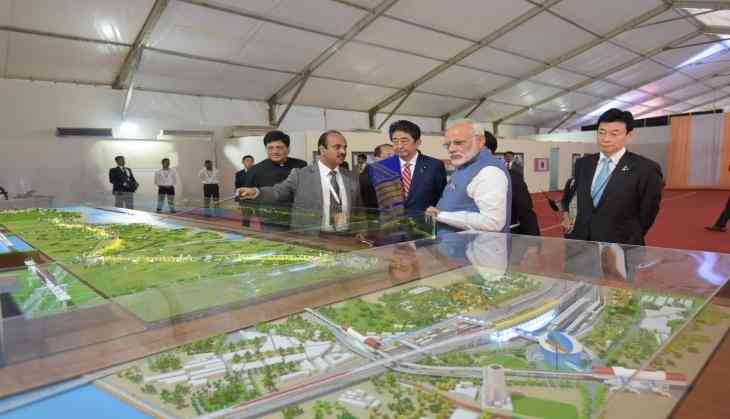
The bullet train project now becomes a work in progress with a historic agreement reached between Indian Prime Minister Narendra Modi and his Japanese counterpart Shinzo Abe during the later's recently concluded visit to India.
There has been a mixed view point in the country on ways to streamline this wide spread Indian rail route that cuts the time to travel and reduces the burden both for the passenger travel and freight transport on land, sea and air ways in a manner that the full potential of the railways can be realized.
"One of the options often talked about is the introduction of the high speed railway networks in the country. The debate over the years has been intense as it come along with a mixed bag of bearing on politics, economy and society. This debate however over the years has only intensified with the government getting more determined to bring about railway reforms and provide a faster means of transport to public via introduction of high speed rail networks and implementation of bullet train project," says Pooran Chandra Pandey, Global CEO, DOC Research Institute, Berlin - a Germany based global think tank.
The agreement paves a pathway for introduction of a high speed railway network of approximately 500 kms between industrial town of Ahmedabad and India's financial capital of Mumbai over the next five years with a Japanese soft loan of Rs. 88000 crores (81 per cent of the cost) at an unprecedented lowest rate of 0.1 per cent for 50 years ushering into a new era of Indo- Japanese bilateral partnership.
"This project would have a significant bearing on regional balance of power through this collaboration between the two nations with Japan scoring over its competitors like China and Germany, the two potent rivals as far as rail technology and innovation in railways infrastructure is concerned," Pandey stated.
"Japan has by far been a leader in high speed railways much ahead of German and Italy and subsequently with France and China since the start of the 20th century. This development also assumes a greater significance as the partnership comes a few weeks after Dokhlam stand off between China and India being resolved diplomatically and Indian Prime Minister's much touted 'Make in India' gaining acceptance globally and equally being supported by his Japanese counterpart in a rather obvious manner, Pandey added.
This is also noteworthy that earlier initiated projects to modernize Indian rail infrastructure both with support from China and Russia could not gather momentum and have by and large been labeled as a non-starter.
Concerns of safety have been raised and critics have doubted the bullet train project as it is cost intensive amid fears of domestic and local politics over the high speed rail project. Some have even expressed their doubts weather the bullet train project in India would remain a piped dream, given the distribution of railway infrastructure over multiple states with conflicting and competing political interest.
"Such an ambitious project has various aspects to it ranging from economic, social, political level domestically to one of strategic internationally. This project also sets a clear vision of regional partnerships with commercial gains that ensue in wake of this historic Indo-Japanese collaboration. This project is expected to set in spike in land price along the high speed transport corridor resulting in unlocking of dormant economic activities by putting more disposal income in the hands of those situated along the corridors, " Pandey said to ANI in an e-mail Interview.
He further said. "It is estimated that the bullet train project with Japanese government's full force support may potentially draw a line between long term partners and fair weather friends in the region, besides triggering a commercial competition to fast track regional connectivity that goes well beyond re-setting the regional geo-strategic influence. This in effect is also likely to add muscle to India's nuanced stance on its 'Act East' policy, going forward."
Pandey said , "however, it is evident that flurry of activities on this front will spur the domestic public and private sector enterprises and build in a new partnership between Indian and Japanese industries and associates".
Japanese technology and railway engineering also gives a high degree of confidence in passenger safety standards as Japanese high speed railways has no peers and its technology is known to be the best and the safest even after 50 years of its past track record, he added.
The Indian Railways now ranks among the world's largest rail networks. spread over 115,000 km, with 12,617 passenger trains and 7,421 freight trains each day from 7,172 stations plying 23 million travellers and 3 million tonnes (MT) of freight daily. India's railway network is recognised as one of the largest railway systems in the world under single management. "This accolade however has not been without its share of challenges and difficulties in terms of its overall management, administration, passenger facilities, technology usage, track upgradation, safety standards and marketing of the railway economy to leverage such a vast network of railways to its fullest potential. As a consequence, a formidable reforms in the sector and infusion of technology and financial resources are the crying need for the railways and perhaps the only way to meet a fast rising public demand for a safer, shorter and cost effective travel in the one of the world's largest railway networks, he said.
-ANI


